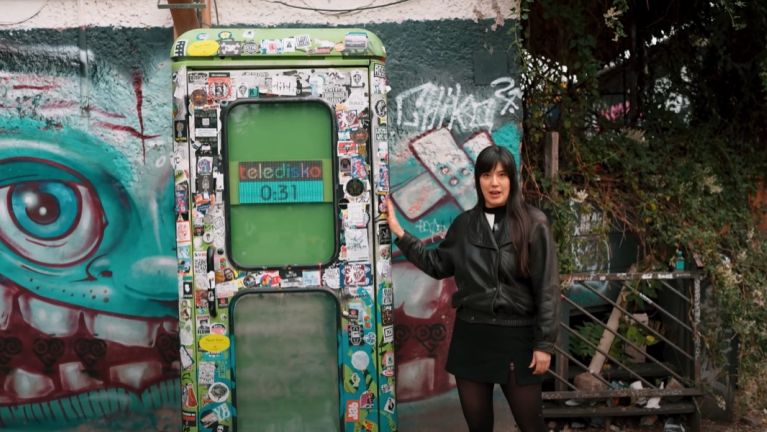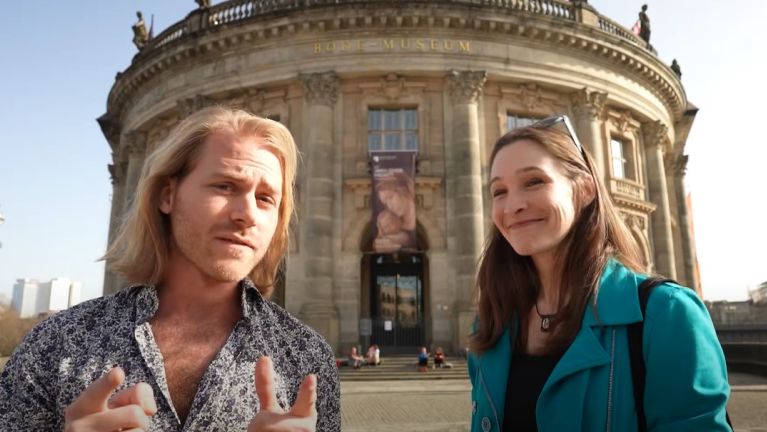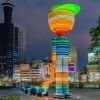Tokyo and Berlin – a comparison of two cities
Berlin and Tokyo have been twinned for three decades. High time to take a closer look at the two cities.

Tokyo and Berlin – two cities that are 9,000 kilometres apart and yet have a lot in common: as well as being hip tourist magnets, they are both capitals of nightlife and party culture. In addition, they both offer a wealth of history, top-level science and fascinating architecture. Twin cities since 1994, Berlinand Tokyo have been working together on urban development, the environment and culture since 2014. They have some things in common, but there are also significant differences between them, so it’s interesting to compare.
Millions of lives in very different spaces
Around 3.5 million people pass through Tokyo’s largest underground hub, Shinjuku, every day – that’s almost the same as the total population of Berlin (3.9 million). The capital of Germany is also the country’s most populous city – in fact it has the largest population of any city in the European Union. But Tokyo’s population is almost twice the size (9.7 million), and the Tokyo metropolitan area has more than 37 million residents. At 891 square kilometres, the city state of Berlin is the largest municipality in Germany, while the people of Tokyo are crammed into an area of just 628 square kilometres – making it the most densely populated city in Japan. This means that there is a lot of vertical construction and every square metre is fully utilised. Sports fields on the roof? Car lifts, bicycle garages and a museum on the 53rd floor? All of this is possible in Tokyo.
A bonus for moving to the city – or out into the country
In the past ten years alone, 400,000 new residents have arrived in Berlin – and the city is happy to take in every newcomer, even giving out welcome bonuses in some cases.
Dieses YouTube-Video kann in einem neuen Tab abgespielt werden
YouTube öffnenThird party content
We use YouTube to embed content that may collect data about your activity. Please review the details and accept the service to see this content.
Open consent formBy contrast, Tokyo’s magnetic attraction is becoming an increasing burden. Around a third of Japan’s total population already lives in the Tokyo metropolitan area. Here the government is using bonuses to encourage families and businesses in particular to move to more rural regions, some of which are almost dying out due to demographic change and a shrinking population.
History and modernity
Bustling Tokyo combines modernity with tradition and history – right next to each other at the heart of the city: historic sites such as the imposing Meiji Shrine are located right next to ultra-modern high-rise buildings such as a new shopping centre in Harajuku.

History and progress go hand in hand in Berlin, too – such as on the Museum Island, an outstanding architectural synthesis of the arts: five world-famous museum buildings dating back to the period of the Prussian rulers form a fascinating ensemble together with the modern James Simon Gallery designed by British star architect David Chipperfield. It was listed as a UNESCO World Heritage Site in 1999.
Dieses YouTube-Video kann in einem neuen Tab abgespielt werden
YouTube öffnenThird party content
We use YouTube to embed content that may collect data about your activity. Please review the details and accept the service to see this content.
Open consent formSuperlative science
Both cities are home to some of each country’s best universities. The three major universities in Berlin – the Free University of Berlin, Berlin Institute of Technology and Humboldt University Berlin – have been cooperating with universities in Tokyo for more than 20 years, as has Berlin’s Charité hospital. The memorial to the Japanese military doctor, poet and translator Mori Ôgai at Luisenstraße 39 belongs to Humboldt University. Based in Berlin since 1985, the Japanese-German Center Berlin (JDZB) is supported by the German and Japanese foreign ministries, as well as the state of Berlin.
There are also numerous non-university research institutes such as the Leibniz Centre for General Linguistics and Helmholtz Center Berlin that cooperate with Japanese partner institutes. The Fraunhofer Society and the German Aerospace Centre (DLR) even have offices in Tokyo.
Capital cities for singles
Although questions about relationship status are not officially collected, surveys show a similar picture for both cities: in both Berlin and Tokyo, around half of the population is not in a committed relationship – perhaps one reason why numerous nightlife districts are to be found in both cities. In Roppongi and Shibuya in Tokyo, people often dance or karaoke through to the wee small hours, while Berlin’s party culture enjoys an excellent international reputation for its creativity and adaptability.
LGBTQ+ culture
Both Berlin and Tokyo are liberal with regard to LGBTQ+. While the recognition of LGBTQ+ rights is sometimes a difficult struggle in Japan in general, there is no sign of this in Tokyo. The Shinjuku Ni-chōme neighbourhood is an example of how the scene is flourishing: around 300 bars and nightclubs are located within just five blocks of each other here – making Ni-chōme the neighbourhood with the highest concentration of queer bars in the world. Around 270,000 people took part in Tokyo Pride in 2024.

In Berlin, the epicentre of the LGBTQ+ community is Nollendorf Platz in Schöneberg in south-west Berlin. There are also well-known venues in Mitte and Kreuzberg, such as Weinbergspark, Café Sundström and the nightclub SchwuZ.
Learning from each other
Tokyo is slightly ahead of Berlin in some respects – for example, when it comes to the question of how an ageing society can counter labour shortages. Strategies are also being developed in Berlin and Tokyo on topics such as digital change and the smart city that have the potential to be mutually beneficial. No matter what the two cities can learn from each other, Tokyo will certainly always have a significant lead over Berlin in one respect: it is the largest metropolitan region in the world, while Berlin is a fairly small city in terms of population.




